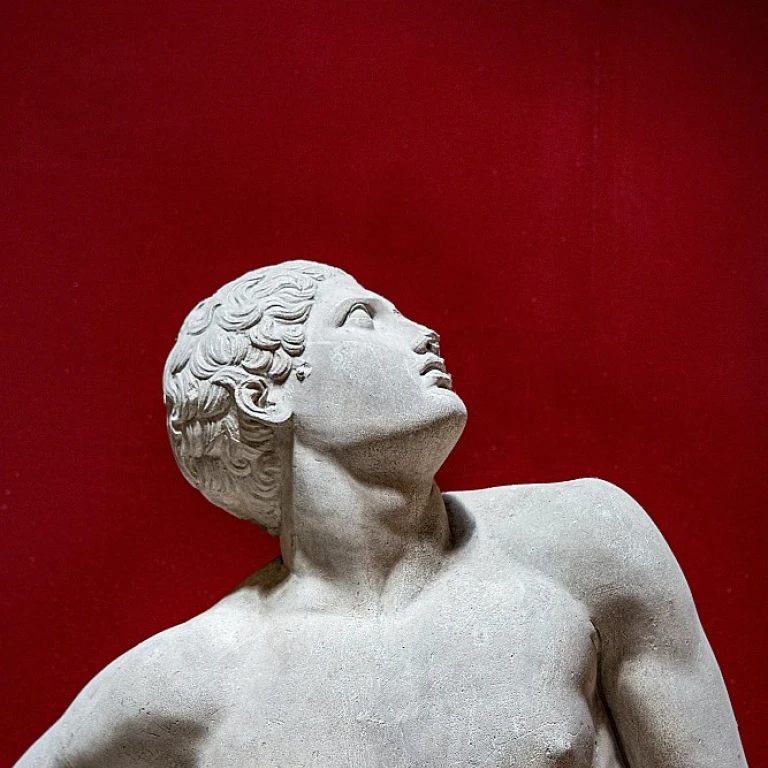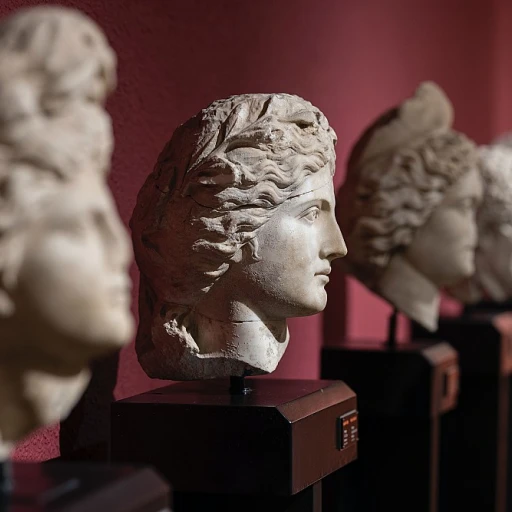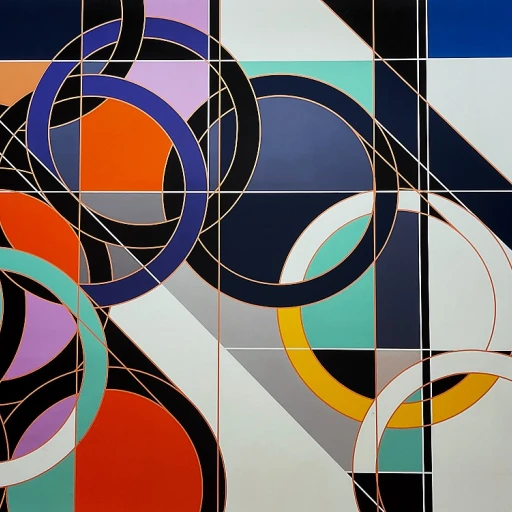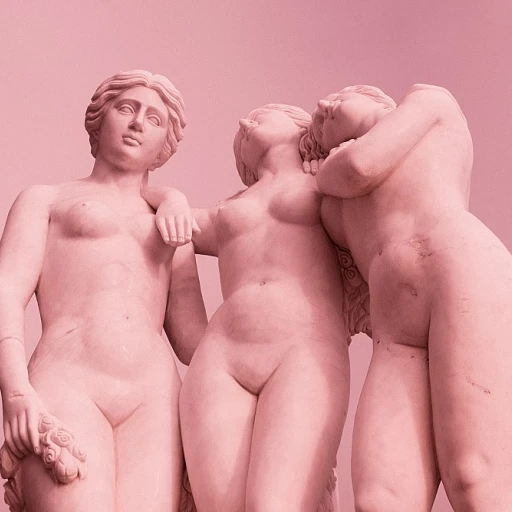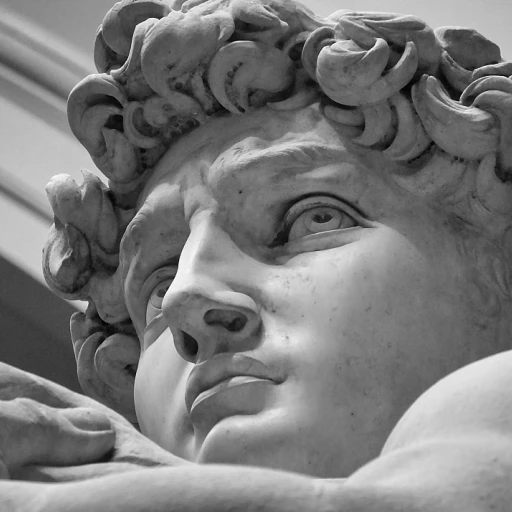-teaser.webp)
The Enigmatic Appeal of Jackson Pollock's Number 5
The Mysterious Charm of a Masterpiece
Jackson Pollock's "Number 5" is not just a painting; it is an enigmatic manifestation of the artist's pioneering spirit in abstract expressionism. Created in 1948, this modern art piece epitomizes the essence of action painting, where the physical act of painting becomes a crucial part of the finished work. Unlike traditional art forms, "Number 5" thrives on chaos, fluidity, and raw emotion, inviting viewers into a dynamic dance of paint across its expansive canvas.
Pollock's art, including the infamous drip technique showcased in "Number 5," revolutionized the art world, provoking a reevaluation of how creativity and spontaneity can coexist. His methods defied conventional boundaries, breaking free from the confines of meticulous brushwork to embrace the random, yet deliberate, layout of colors and forms. This audacious style captured the essence of the abstract, a realm where paint converses independently of realism.
"Number 5" also embodies the cultural departure from European art traditions, contributing to the rise of American abstract expressionism. Jackson Pollock, through his confrontational approach, highlighted the evolving identity of American artists in the mid-20th century. The painting invites speculation and interpretation, resonating with art enthusiasts and collectors alike, and maintaining its position as a prized asset among expensive paintings.
Understanding the journey of such captivating works, both in terms of cultural impact and market dynamics, is essential for appreciating their multifaceted appeal. These themes extend beyond the initial allure, influencing both the value of the painting and its significance in art history and collections worldwide.
The Journey of Number 5 in the Art Market
The Remarkable Path of a Masterpiece
Jackson Pollock's Number 5 is not just a painting; it's a phenomenon that has captivated the art market for decades. This abstract expressionist masterpiece, painted in 1948, has traversed a fascinating journey, reflecting the dynamic nature of art valuation and appreciation. The painting's journey in the art market is a testament to the enduring allure of Pollock's work and the complexities involved in the trade of luxury artwork.
Initially sold for a modest sum, Number 5 quickly became a coveted piece among collectors and museums. Its value skyrocketed over the years, culminating in a record-breaking sale that positioned it among the most expensive paintings ever sold. This trajectory highlights the volatile yet rewarding nature of investing in abstract art, where the artist's reputation and the painting's historical significance play pivotal roles.
Pollock's innovative drip technique, a hallmark of his action painting style, has been a significant factor in the painting's market appeal. The chaotic yet harmonious interplay of oil on canvas challenges traditional notions of art, making it a quintessential example of modern art's evolution. As collectors and investors continue to seek pieces that embody the spirit of abstract expressionism, Number 5 remains a benchmark for both artistic innovation and financial investment.
The painting's journey is also a reflection of the broader trends in the art market, where abstract expressionist works have consistently commanded high prices. As interest in Pollock's paintings continues to grow, so does the intrigue surrounding the valuation and sale of such iconic pieces. For more insights into the complexities of art valuation and the stories behind other masterpieces, explore this article.
Understanding the Techniques Behind Number 5
The Artistic Ingredients of a Masterpiece
The composition of Jackson Pollock's Number 5 is a defining moment in the world of abstract expressionism. At its core, it embodies the essence of action painting, where every stroke is a testament to the artist's spontaneity and emotion. This famed oil on canvas, dating back to 1948, is one of Pollock's most celebrated works, showcasing his signature drip painting technique.
Pollock's revolutionary approach to painting set a new standard for modern art. By laying the canvas flat on the ground, he transformed the way artists interacted with their work. This method allowed Pollock to navigate around the canvas, using almost danced-like movements to apply layers of paint. As a result, the surface becomes a pulsating symphony of color and form.
The crafting of Number 5 involves using commercial quality oil-based paints, contributing to the dynamic texture and depth that has mesmerized art lovers worldwide. Unlike traditional techniques, Pollock’s approach was a raw, physical expression that became iconic as abstract expressionism evolved. The layered tangles in each of his paintings, including the Number series, were not just random patterns but a deliberate dance of creativity and chaos molded through the artist's action and vision.
This particular methodology highlights how Number 5 and Pollock's other works differ from the classic styles of their time. His art history legacy is further cemented by how Number 5's importance is recognized among art historians and luxury collectors. As an iconic representative of Pollock's work, it remains a highly sought-after piece whenever discussions about expensive paintings arise in the art market.
The correlation between Pollock's techniques and the overall cultural impression of Number 5 offers a tremendous insight into understanding the connection between luxury artwork enthusiasts and the pieces they cherish. The painting's history and craftsmanship are as captivating as its visual impact, making it a quintessential piece in any modern art discourse.
The Cultural Significance of Number 5
The Profound Impact on Cultural Landscapes
The cultural significance of "Number 5" by Jackson Pollock extends far beyond the confines of conventional art appreciation. As a seminal work in the abstract expressionism movement, Pollock's painting embodies a shift in the cultural milieu of the post-war American art landscape. His unique technique of drip painting, a hallmark of action painting, was not just an aesthetic innovation but a cultural revolution that redefined the very essence of art-making. Pollock's "Number 5" is a prime example of how modern art can challenge preconceived notions of what art should be. It leaves viewers grappling with the fluidity of interpretation, inviting them to form personal connections with the painting. As with many other pollock paintings, "Number 5" encourages a dialogue between the viewer, the canvas, and the artist's intentions, demonstrating the power of art to transcend visual boundaries. Furthermore, Pollock's work catalyzed the rise of American art on the global stage. The success of his paintings, especially in prominent auction houses and museums, validated abstract expressionism as a legitimate and powerful form of cultural expression. This helped establish the United States, particularly New York, as a new hub for avant-garde art, fostering a community of artists driven by innovation rather than tradition. The cultural implications of "Number 5" resonate even today. Though it was painted decades ago, its influence can be seen in the way contemporary artists and collectors approach modern art. The ripple effects of this iconic painting can still be observed in pop art movements and beyond, proving its enduring relevance in art history and the ongoing evolution of artistic practices across the globe.Challenges in Valuing Luxury Artwork Like Number 5
Determining the Value of Prestigious Pieces
Valuing luxury artwork, especially those akin to Jackson Pollock's Number 5, presents a unique set of challenges that not only demand expertise but also an understanding of various intricate factors.
The exorbitant price at which Pollock's paintings have been sold is a testimony to their profound impact on the art world. However, their value isn't solely derived from the sale price. The determination involves a blend of the artwork's historical relevance, its impact on abstract expressionism, and Pollock's innovative techniques such as drip painting. His method of action painting with oil on canvas is said to capture a moment in time, resonating with collectors who appreciate the spontaneous and dynamic nature of his work.
Furthermore, the provenance of such paintings plays a crucial role. A documented chain of ownership adds to the allure and authenticity of the piece. In this case, Number 5's journey through prestigious galleries and interactions with notable collectors enhances its appeal.
Market dynamics are another factor. The popularity and momentous status in modern art circles significantly influence bidding wars among collectors. This can be heavily impacted by transient trends in art markets or a sudden surge in interest due to a cultural renaissance of American artists.
Despite the high value, experts must navigate the subjective nature of the artwork's worth, understanding that the emotional and cultural significance to a buyer may eclipse its economic appraisal. This complexity calls for a nuanced approach when it comes to investing in such esteemed pieces.
The Future of Luxury Artwork Investments
Investing in the Future of Abstract Expressionism
The future of luxury artwork investments, particularly in the realm of abstract expressionism, holds a unique allure for collectors and investors alike. As we delve into the complexities of Jackson Pollock's Number 5, it's essential to consider how this iconic piece and others like it shape the art market's trajectory.
Pollock's work, characterized by its dynamic drip paintings and innovative action painting techniques, continues to captivate art enthusiasts and investors. The painting itself, with its intricate layers of oil on canvas, represents a pivotal moment in modern art history. As discussed in earlier sections, the journey of Number 5 through the art market has been nothing short of remarkable, reflecting its enduring value and appeal.
Looking ahead, several factors will influence the investment potential of luxury artworks like Number 5:
- Market Trends: The demand for abstract expressionist pieces remains robust, with collectors seeking works that embody the movement's spirit. As the art world evolves, staying attuned to these trends will be crucial for investors.
- Provenance and Authenticity: The provenance of a painting significantly impacts its value. Ensuring the authenticity of a piece, especially one as renowned as a Pollock painting, is paramount for maintaining its investment potential.
- Cultural Significance: The cultural impact of Jackson Pollock and his contributions to abstract expressionism cannot be overstated. As museums and galleries continue to celebrate his work, the cultural significance of pieces like Number 5 will likely enhance their value.
In conclusion, the future of investing in luxury artworks such as Number 5 is promising, yet requires careful consideration of market dynamics, authenticity, and cultural relevance. As collectors and investors navigate this landscape, the legacy of Jackson Pollock and his groundbreaking contributions to art history will undoubtedly continue to inspire and influence the art world.

